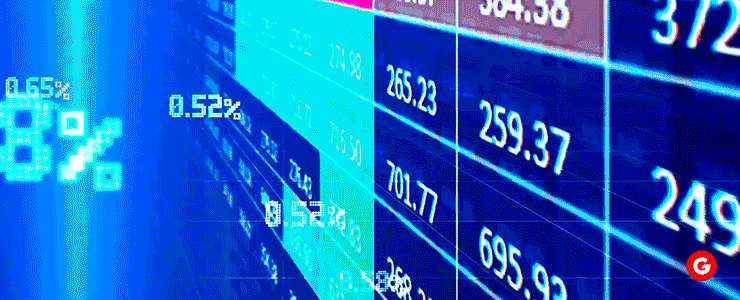Is forex trading a CFD? In today’s article, let’s find out if forex trading is indeed CFD and, if so, how they differ. This means that knowledge of these differences will determine your level of performance in online trading companies.
The answer is not simple—it is NO. Forex trading and CFD trading are different, yet they share similarities. You might wonder why these two are different; we will explain this next.
What is CFD?
A CFD is a contract between two parties that allows you to trade on the price of an instrument, for example, going long (if it rises) or shorting if it drops. They allow you to trade in markets (stock indexes, oil, gold, etc.) such as all or nothing, simply by predicting whether the price will rise or fall.
A contract for difference refers to the traded price between the opening and closing price of the associated assets. When you have opened a position, the contract is based on the asset. Moreover, when you undertake a closing position, the result you make based on profit or loss is based on the trade of the particular position.
For example, if you assume that the price of gold will rise, you are permitted to open a “long position.” If you are correct and the price increases, you can just shut that particular position and make this difference in your profit.
For example, when the company decides to set the price of a product higher than the actual price in the market, and you are wrong, the result would lead to a loss when the prices are reduced. Likewise, if you anticipate a lower price, you open the short position that allows you to make a bet on a downward movement.
Meanwhile, FXGiants facilitate the trade of CFDs from different markets as an opportunity to control risks and earnings.

Differences Between CFD and Forex
The answer to the question “Is forex trading a CFD?” is an obvious no. Nonetheless, forex trading and CFD trading can look like the same activity from a distance, so it is important to note these differences.
What It Is: Forex is converting one currency to another, like Euros for Dollars or Pounds.
Ownership: Buying one country’s currency for another example. EUR/USD. That makes it a real foreign exchange of currencies. CFD trading involves placing an agreement on the future price of an asset without actually having to buy it. You do not deal in such physical cash, tangible products, or equities; you deal in contracts whose value depends on the price rates.
The Forex marketplace: This functions 24×7 for that reason being open all the time. However, CFD markets vary by asset class in the traded underlying instruments. Some, such as indices and commodities, have longer hours; however, they are not trading 24 hours a day.
Leverage: Both forex and CFDs comprise leverage trading because you can trade large exposures with a minimum amount. But again, different assets have different leverage ratios and different trading platforms. On trading brokers like FXGiants, there are trading Forex Market and CFD Trading, with each leverage based on the trader.
Access to market: Forex trading is restricted to the currency markets, while CFD can be opened in further business sectors such as commodities (gold, silver, etc.), shares, and indices.
Spread and Fees: In forex trading, the bid-ask spreads are somewhat narrower, given that forex is the most liquid market in the financial world. Bid-ask spreads can be wider in CFD trading, and trading involves swap fees. On platforms such as FXGiants, issues related to fees are well stated, thus enabling traders to balance the costs.
Examples of a CFD in Forex
Now that you know the answer to ”Is Forex trading a CFD?” let’s see a few examples of CFD in Forex. Although CFDs are not directly used in forex trading, you can take part in foreign exchange by using CFDs. If you want to go long the EUR/USD, for example, but do not wish to own any euros or dollars themselves, then a CFD can be traded to get into this position.
Here’s how it works: You can predict the price change in EUR/USD. If you think the euro will rise above the U.S. dollar, you make a long position, which means buying CFD. A lower price means that if you are right, you make a difference upon a price rise to the consumers. If, on the other hand, the euro decreases in value, you’re at a loss.
Such platforms as FXGiants offer traders the chance to take a chance on currency movement by using CFD but not possessing the currencies. With MetaTrader 4, traders can make these trades easily with other enhanced tools and charts to put their investment on.

Conclusion
In summary, the answer to “Is forex trading a CFD?” is no. Whether trading on the Forex market or using CFDs, it is important to know what distinguishes them from each other. Fortunately, many brokers, such as FXGiants, that provide both without charge to the client allow you to decide whichever fits best for you.
FAQs
Is forex trading a CFD?
This means that forex trading cannot be categorized as CFD. Forex deals with the conversion of money, while CFD relates to a contract dealing with the fluctuating price of an asset.
Does Forex.com use CFDs?
Of course, Forex.com provides CFDs on a wide range of financial instruments, such as currencies.
Is an ETF a CFD?
No, Etf is a fund that owns a pool of assets, and CFD is just the contract based on the price difference.
Does EUR/USD come under CFD?
Whereas EUR/USD is a currency pair, you can deal in it through a CFD contract without possessing the currencies.
Where is CFD trading banned?
Trading of CFDs is prohibited in certain jurisdictions, such as the United States and Belgium, mostly owing to regulatory restraints. Always try and know the local laws before trading.
DISCLAIMER: This information is not considered investment advice or an investment recommendation, but is instead a marketing communication
